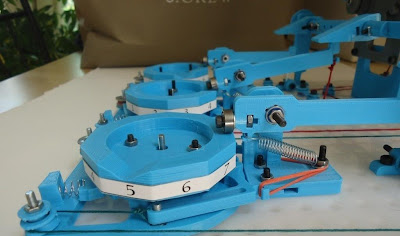Engineer creates old-world mechanical computer with 3D-printed parts
Let’s be honest; a mechanical computer probably isn’t practical in this day and age. Back in the 1800s, mechanical computers were works of modern art and a huge step in engineering. All you history buffs might recall Charles Babbage’s “Difference Engine,” (1822), or even the “Kerrison Predictor” (late 1930s). But the only place you’re likely to see a mechanical computing creation today is at your local science museum. At least, that used to be the case, until one brave electrical engineer decided to create his own version.
An inventive chap, known simply as “Chris” used his electrical engineering background to put together a simplistic mechanical device that tabulates numbers. The Turbo Entabulator, as Chris dubbed it, uses a construct to punch out a series of numbers onto cards that would make any Fibonacci fan proud. That’s the extent of this archaic-looking machine, and although it doesn’t do much more than tabulate, the key feature of this machine separates it from all other mechanical computers in existence.
Chris used his MakerBot 3D printer to assemble this unique creation, which makes it one of the first old-world mechanical computers to be made from new-world technology. It also (most likely) makes it the first “computer” to technically be “printed.”
The project wasn’t without struggle, though. “The mechanical counters [were fiddly],” Chris told TechHive. “I had extremely little experience designing anything with moving parts prior to this project. The counters don’t always ‘snap’ into position, and can wind up reading ’7 3/4' instead of ’8', which can jam up the machine when you go to process the next instruction.” Still, when you watch the video, and realize that the machine is completely mechanical, requiring human-powered cranking to operate, you understand just how impressive this feat really is.
If you’re interested in learning more about the steps that Chris took to build the Entabulator, you can view the journey on his blog. He also uploaded some “schematics” to Thingverse, where you can take a crack at building your own device.




Comments
Post a Comment